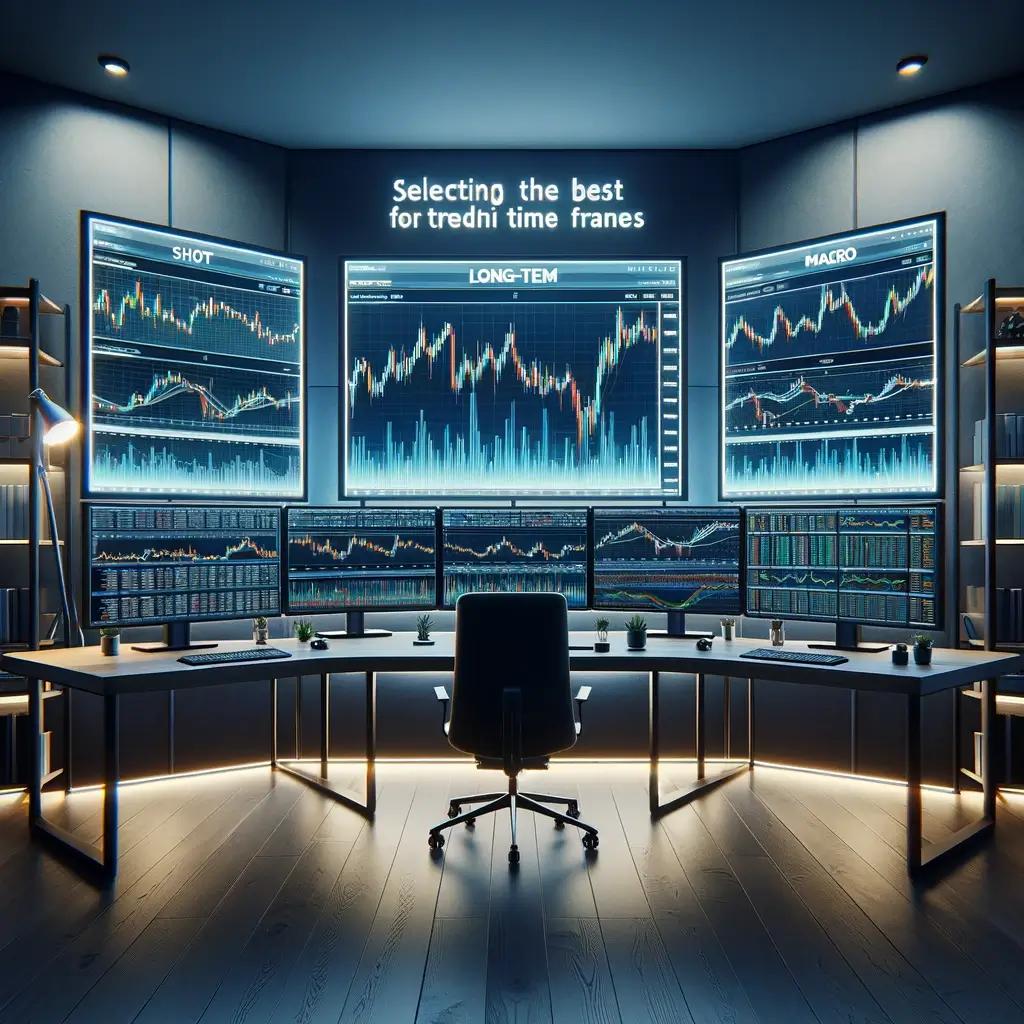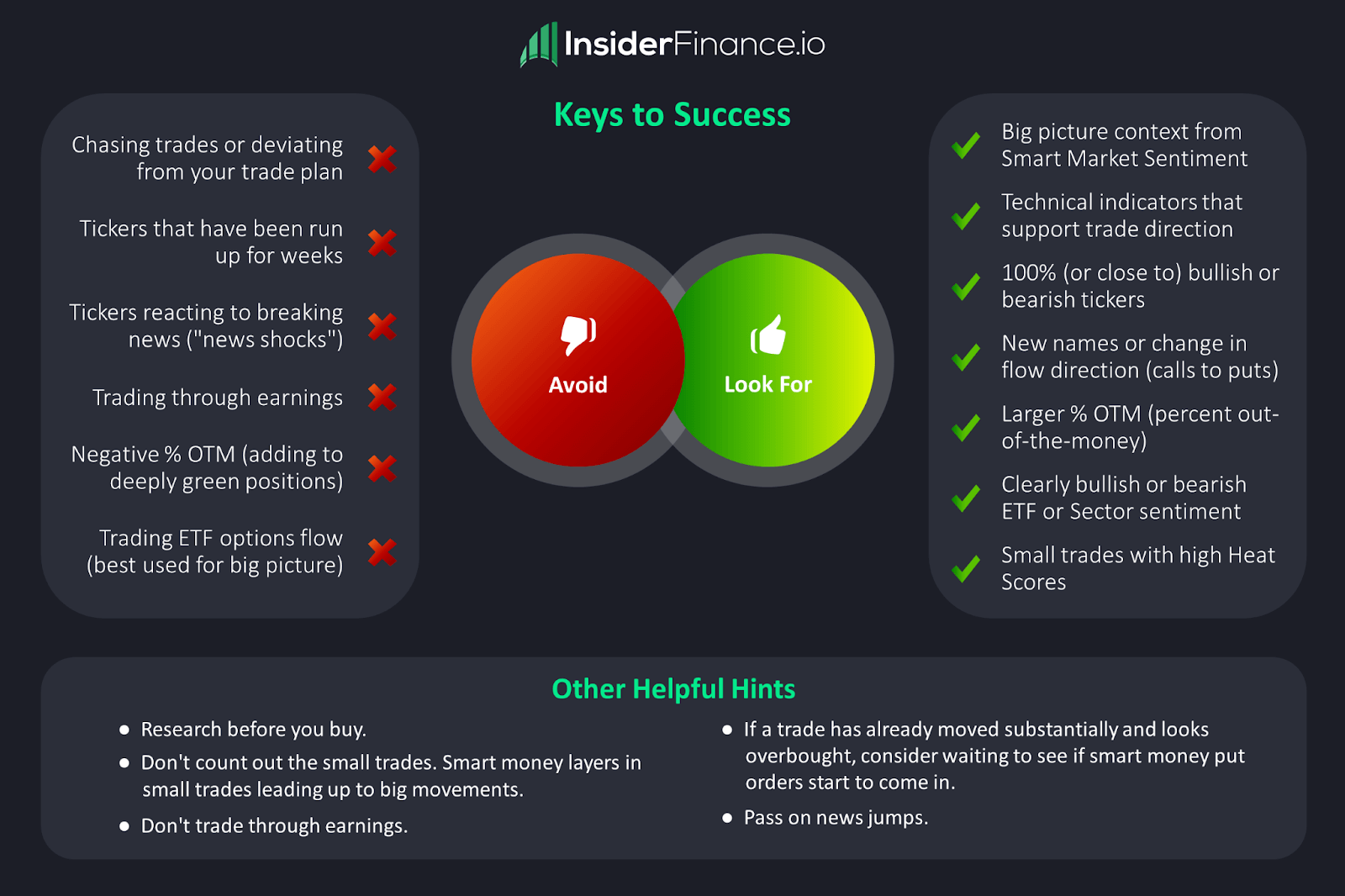What are Dark Pool Trades?

Dark pool trades, or prints, are equity block trades executed over-the-counter (OTC) through a private exchange only available to institutional investors.
These private exchanges (also called Alternative Trading Systems) are known as “dark pools” due to their complete lack of transparency.
According to the CFA Institute, dark pools are continuing to rise in popularity. An estimated 40% of all stock trades were executed in dark pools in 2017, compared to an estimated 16% in 2010.
Why Do Institutional Investors Use Dark Pools?
Institutional investors trade in dark pools for two primary reasons:
- Find buyers and sellers for large orders without publicly revealing intentions
- Obtain better pricing for executed trades
Dark pools allow institutional investors to quietly find buyers and sellers for large orders without causing large swings in the market (typically against them).
How is this possible? Dark pools are not required to make the order book available to the public.
Instead, transactions executed through dark pools are released to the consolidated tape after a delay.
For example, let’s say an investment bank is trying to sell 400,000 shares on a public exchange like the New York Stock Exchange.
As soon as institutional investors or high-frequency traders see a large sell block hit the order book, the markets react, and the security will likely decrease in value by the time the investment bank is able to find enough buyers to fill the entire order.
However, if the trade is disclosed only after it has been executed, the news has a much smaller impact on the market.
Another reason to fill large equity orders in dark pools is to obtain better pricing.
Trades made on dark pools can have lower transaction costs in two ways:
- Dark pools typically offer lower exchange fees
- The lack of price transparency may result in trades filled closer to the mid-point of the quoted bid-ask spread
A common criticism of dark pools is that if there is enough volume traded through dark pools, stock prices on public exchanges may not reflect the actual market value.
While the above scenario may work out well for the investment bank selling the shares, consider a retail investor who just purchased shares of the company the investment bank just sold 400,000 shares on a dark pool.
Once the sale of those 400,000 shares becomes public knowledge, the stock price could tank, and the retail investor who just bought shares paid too much.
HIGH POTENTIAL TRADES SENT DIRECTLY TO YOUR INBOX
Add your email to receive our free daily newsletter. No spam, unsubscribe anytime.
How Long Are Dark Pool Trades Delayed?
According to FINRA’s reporting requirements for dark pools, trades executed between 8:00 am and 8:00 pm EST must be reported within 10 seconds of being executed.
Trades executed between 8:00 pm and 8:00 am EST must be reported before 8:15 am the following day.
An important caveat is that a trade is not considered “executed” until the order is filled in its entirety.
Due to the inherently large nature of trades made on dark pools, it may be several hours until the trade is fully filled and reported to FINRA.
The reporting can be delayed even further if the trade is filled outside market hours. In some cases, it may be up to 24 hours before a trade is made public.
To add to the delay, institutional investors found a loophole by executing trades on European dark pools to get around reporting them immediately.
Trades executed on European dark pools may not be reported until hours later or the next trading day.
Why Are Dark Pool Prints Important for Traders?
Understanding dark pool prints is critical for identifying upcoming market movements, changes in trends, and support and resistance levels.
Dark pool prints are a leading indicator of upcoming market movements.
This is especially true for major indexes like SPY.
Historically, SPY dark pool prints have proved to be a powerful leading indicator of large upcoming market movements.
A pattern of multiple large trades with bullish characteristics has predicted very large bullish swings in the overall market, and the opposite pattern has predicted major downturns.
Dark pool prints can signal the beginning of a trend or a change in trend.
Dark pool prints have proved just as powerful at indicating the beginning of a trend or a reserval for any ticker.
A pattern of multiple large trades with bullish characteristics on a ticker with otherwise bearish characteristics can indicate a change in trend, or the same pattern can indicate the beginning of a trend on a ticker otherwise trading sideways.
Dark pool print accumulation can identify support and resistance levels.
Tracking the price level that dark pool prints are trading over time helps identify support and resistance levels.
If a ticker is trading down, identifying large dark pool print accumulations below the current price will uncover support levels where a reversal may occur.
The more volume that was transacted at that price, the stronger the support level is likely to be.
The same is true for large accumulations above the current price.
The price with the most volume accumulated can signal the resistance level at which the ticker may consolidate and reverse down.
Dark pool prints provide the full picture of market value.
Without the full picture of dark pool prints, traders could pay too much for an equity security.
Consider the retail trader in the example above who was unaware of a large dark pool trade that would have impacted the share price had it been traded through a public exchange.
How Do You Find Dark Pool and Lit Pool Prints?
InsiderFinance takes the guesswork out of trying to interpret dark pool prints.
With real-time options flow, news analyzed for sentiment, and trends analysis on the platform, InsiderFinance goes beyond solely dark pool prints to provide a complete picture of what institutional investors are trading.
Combined, these features bridge the information gap between retail traders and institutional investors to help traders identify upcoming market movements and figure out patterns that can turn into profitable trades.
HIGH POTENTIAL TRADES SENT DIRECTLY TO YOUR INBOX
Add your email to receive our free daily newsletter. No spam, unsubscribe anytime.








